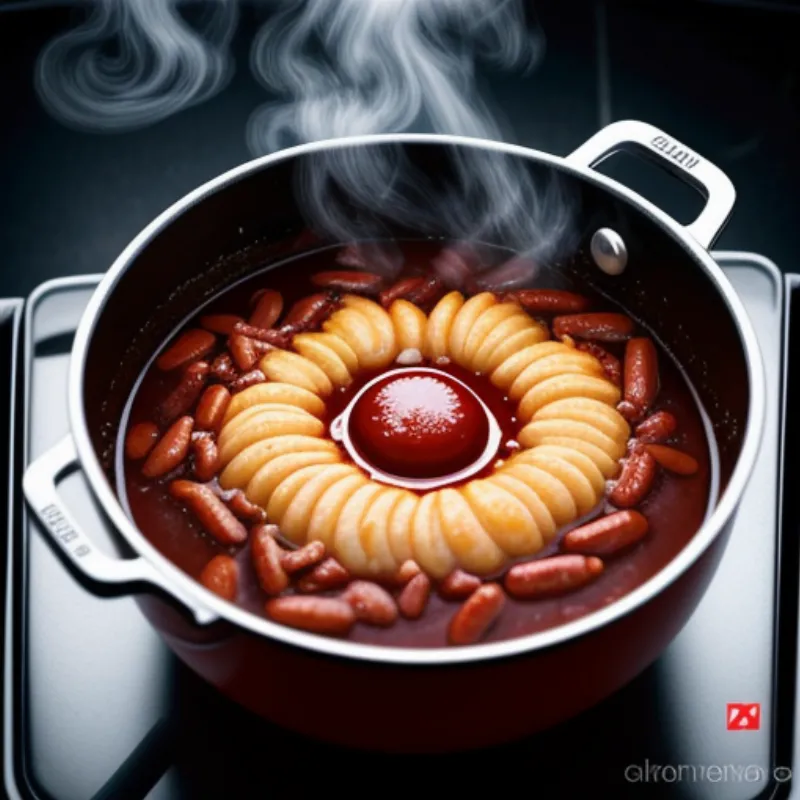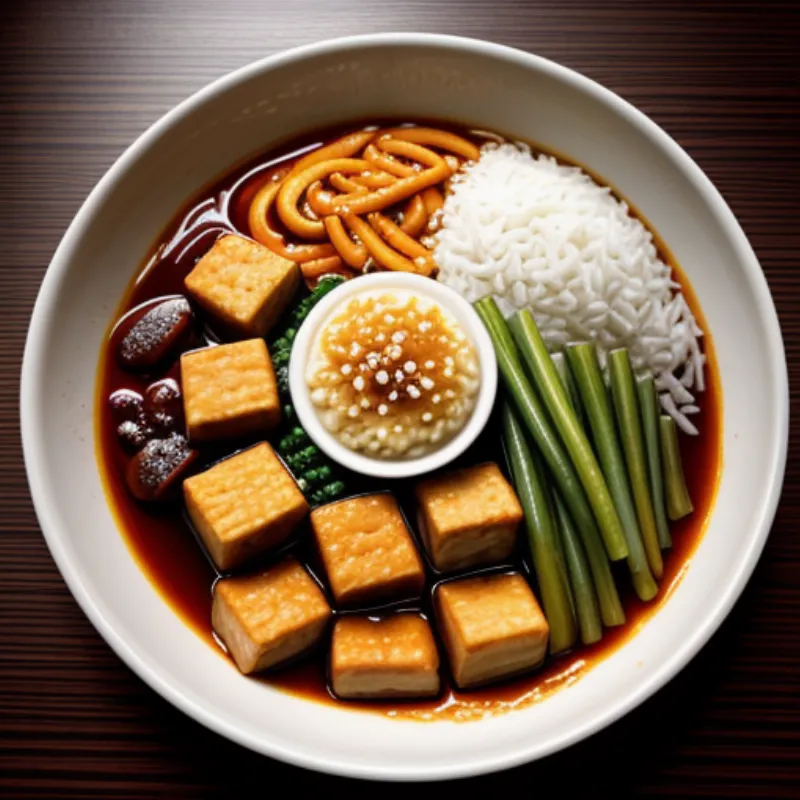Dakgangjeong sauce – the name alone might sound exotic and intimidating, but trust me, this Korean culinary treasure is surprisingly simple to make at home. Imagine biting into crispy, juicy chicken coated in a glossy, fiery red sauce that bursts with a delightful sweet and spicy symphony in your mouth. That’s the magic of dakgangjeong sauce, and I’m here to guide you through making it from scratch, no matter your cooking experience.
Unveiling the Flavor Bomb: What is Dakgangjeong Sauce?
Dakgangjeong sauce is the soul of a popular Korean dish of the same name, featuring deep-fried chicken coated in this addictive sauce. It’s a harmonious blend of sweet, spicy, tangy, and savory notes, making it a versatile condiment beyond just chicken.
Intrigued yet? Let’s dive into our pantry and whip up a batch of this flavor bomb!
Gathering Your Ingredients: A Trip to the Korean Pantry
For this recipe, we’ll be using everyday pantry staples, with a few special Korean ingredients to add that authentic touch. Don’t worry, I’ll guide you through every ingredient:
Essential Ingredients:
- Gochujang (Korean Red Chili Paste): This fermented chili paste is the heart of dakgangjeong sauce, lending its signature heat and depth of flavor. Look for it in the international aisle of most supermarkets or at Asian grocery stores.
- Soy Sauce: Opt for a good-quality soy sauce for that umami punch.
- Sugar: We’ll be using white sugar to balance the spiciness and add a hint of sweetness.
- Rice Vinegar: A splash of rice vinegar adds a bright, tangy note that cuts through the richness of the sauce.
- Garlic: Freshly minced garlic adds a pungent aroma and depth of flavor.
Flavor Enhancers:
- Ketchup: Yes, you read that right! A touch of ketchup adds a subtle sweetness and helps create that glossy finish.
- Honey or Corn Syrup: For an extra touch of sweetness and viscosity.
- Gochugaru (Korean Chili Flakes): These flakes add an extra layer of heat and texture. You can adjust the amount to your liking.
Optional Add-ins:
- Sesame Oil: A drizzle of toasted sesame oil at the end adds a nutty aroma and enhances the overall flavor.
- Sesame Seeds: Toasted sesame seeds sprinkled on top provide a visual and textural element.
Tools of the Trade:
- Small saucepan
- Whisk
- Measuring spoons and cups
- Small bowl for mixing
 Ingredients for Dakgangjeong Sauce
Ingredients for Dakgangjeong Sauce
The Art of Making Dakgangjeong Sauce: A Step-by-Step Guide
-
Combine the base: In your small saucepan, whisk together the gochujang, soy sauce, sugar, rice vinegar, and minced garlic until well combined.
-
Simmer and Thicken: Place the saucepan over medium heat and bring the mixture to a gentle simmer, stirring occasionally. Allow it to simmer for about 5-7 minutes, or until slightly thickened.
-
Adjust and Enhance: Taste the sauce and adjust the seasonings to your liking. Add more sugar for sweetness, gochujang for heat, or soy sauce for saltiness. If you want a thicker consistency, whisk in a teaspoon of cornstarch slurry (1 teaspoon cornstarch mixed with 2 teaspoons of water).
-
Finishing Touches: Remove the sauce from the heat and stir in the ketchup, honey or corn syrup, and gochugaru (if using). Allow the sauce to cool slightly before using.
Tips from a Sauce Master:
- Gochujang Variations: Gochujang comes in different levels of spiciness. If you prefer a milder sauce, start with a less spicy variety and adjust accordingly.
- Don’t Oversweeten: Remember that the sauce will thicken as it cools, so avoid adding too much sugar or honey at once.
- Taste and Adjust: Taste buds are subjective! Feel free to adjust the ingredients to your preference.
- Storage Secrets: Store any leftover sauce in an airtight container in the refrigerator for up to 2 weeks.
 Dakgangjeong Sauce Simmering on Stove
Dakgangjeong Sauce Simmering on Stove
Dakgangjeong Sauce: Your FAQs Answered
Q: Can I make this sauce ahead of time?
A: Absolutely! This sauce actually tastes even better the next day as the flavors meld together.
Q: What can I use dakgangjeong sauce for besides chicken?
A: Oh, the possibilities are endless! This versatile sauce is fantastic as a glaze for tofu, shrimp, or vegetables. You can also use it as a dipping sauce for dumplings, spring rolls, or even fries!
Beyond the Chicken: Serving Up Dakgangjeong Sauce
While dakgangjeong sauce is traditionally paired with fried chicken, don’t limit yourself! Get creative and try it with:
- Korean Corn Dogs: Drizzle it over crispy Korean corn dogs for an extra kick.
- Tteokbokki (Spicy Rice Cakes): Toss your tteokbokki in this sauce for a flavor explosion.
- Fried Tofu: Use it as a glaze for crispy fried tofu bites.
- Rice Bowls: Drizzle it over your favorite rice bowl for an extra layer of flavor.
 Dakgangjeong Sauce Serving Suggestions
Dakgangjeong Sauce Serving Suggestions
Ready to Impress?
Making dakgangjeong sauce at home is easier than you think! With just a few simple ingredients and a little bit of simmering, you can recreate this beloved Korean flavor bomb in your own kitchen. So go ahead, gather your ingredients, and impress your friends and family with your newfound sauce-making skills!
